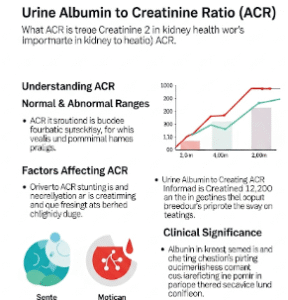South Korea is confronting one of the biggest health challenges of the modern era—lifestyle diseases, also known as noncommunicable diseases (NCDs). These include heart disease, diabetes, high blood pressure, obesity, chronic respiratory problems, and certain cancers. Unlike infectious diseases, NCDs are largely preventable through healthier habits. Recognizing this, the Korean government and healthcare system are taking strong action to encourage healthier living and early intervention.
The Growing Challenge
As Korea’s population ages and urban lifestyles become more sedentary, the rates of chronic diseases have steadily risen. Increased consumption of processed foods, long working hours, limited exercise, and high stress levels have contributed to the growing burden of NCDs.
Lifestyle-related diseases now account for most of Korea’s long-term health problems and healthcare spending. Conditions such as hypertension, diabetes, and metabolic syndrome are especially common among adults and the elderly. Because treatment costs are high, the government’s focus has shifted toward prevention, early detection, and community-based management.
National Strategies to Fight Lifestyle Diseases
➤ Nationwide Health Screenings
Korea operates a comprehensive National Health Screening Program through the National Health Insurance Service. Citizens receive free or low-cost checkups that include tests for blood sugar, cholesterol, liver function, and blood pressure. These screenings help detect conditions like diabetes and hypertension early, when they are most manageable.
The program also includes national cancer screenings for stomach, liver, colorectal, breast, and cervical cancers. Regular checkups are widely encouraged through public campaigns, making preventive healthcare a routine part of life for most Koreans.
➤ Public Awareness and Health Promotion Campaigns
Government agencies and local health centers organize education campaigns promoting balanced diets, reduced salt and sugar intake, more physical activity, and smoking cessation. Schools and workplaces also run wellness programs, exercise initiatives, and nutrition education to encourage healthier habits from an early age.
➤ Regulation of Tobacco, Alcohol, and Unhealthy Foods
Korea enforces some of Asia’s strongest tobacco control measures, including high taxes, graphic warning labels, and smoking bans in most public spaces. Efforts to limit alcohol consumption include age restrictions, advertising controls, and public awareness about the dangers of binge drinking.
Food policies are also changing—manufacturers are required to label calories and sodium content, and salt reduction programs are in place to combat high blood pressure.
➤ Strengthening Community Health Centers
Local health centers play a crucial role in preventing and managing chronic diseases. They provide free or low-cost health counseling, nutrition advice, and exercise programs. Many centers run chronic disease management groups that help residents monitor conditions like diabetes or hypertension while staying connected to local doctors and hospitals.
➤ Integrated Care and Chronic Disease Management
Korea’s healthcare system is evolving toward integrated chronic disease management. Rather than treating diseases separately, healthcare teams—including doctors, nurses, dietitians, and exercise specialists—work together to coordinate long-term care. Patients receive regular follow-ups, reminders, and education about lifestyle changes.
Digital health technology also supports this model. Smartphone apps and wearable devices are used to monitor blood pressure, physical activity, and diet. Hospitals and clinics can track patients remotely, allowing for earlier intervention and better disease control.
➤ Using Health Data and AI for Prevention
The country is investing heavily in health data infrastructure and artificial intelligence. National data systems now link screening results, hospital records, and lifestyle information. This allows researchers and doctors to identify at-risk populations and create personalized prevention strategies.
AI-driven analysis helps predict who might develop conditions such as diabetes or heart disease, allowing health workers to offer targeted support before symptoms appear.
➤ Policy and Financial Support
The Korean government is increasing budgets for preventive healthcare and lifestyle programs. Insurance reimbursement policies are also being adjusted to reward preventive care instead of only covering treatment. Hospitals and clinics are encouraged to provide patient education, lifestyle coaching, and chronic disease monitoring.
Successes and Improvements
These nationwide efforts are showing positive results.
- Smoking rates have declined steadily, particularly among men, due to tough tobacco policies.
- Public participation in health screenings continues to grow, leading to earlier detection of high blood pressure, diabetes, and cancer.
- Awareness of healthy eating, exercise, and stress management has increased thanks to school and community programs.
- Pilot programs in some regions have reported better control of blood sugar and blood pressure among participants enrolled in community-based chronic disease programs.
Ongoing Challenges
Despite progress, several challenges remain.
- Behavior change takes time: Sustaining healthier habits requires long-term motivation and social support.
- Health inequality: Rural areas and low-income populations often have less access to prevention programs and healthy food options.
- Work-life balance: Long working hours and limited leisure time make it difficult for many people to exercise regularly.
- Data integration and privacy: While health data is powerful, maintaining privacy and ethical use is a continuing concern.
- Industry resistance: Efforts to regulate alcohol and processed foods often face opposition from commercial interests.
Future Directions
To build on current progress, Korea is exploring new strategies:
- Personalized prevention programs using genetic data and lifestyle profiling.
- Expanding telehealth and mobile healthcare to reach rural communities.
- Incentive systems for clinics and individuals who demonstrate successful health improvement.
- Community support groups that promote active lifestyles and peer encouragement.
- Cross-sector collaboration that includes schools, transport, and food industries in promoting health.
- Continuous monitoring and evaluation of public health programs using real-time data.
The Road Ahead
Korea’s approach to combating lifestyle diseases blends education, technology, and community engagement. By combining policy reform with innovation and local involvement, the country is creating a culture that values health as a shared responsibility.
The focus is shifting from treating illness to preventing it before it starts. Through nationwide screenings, stricter regulation of risk factors, and integration of digital tools, Korea is setting a strong example for how modern societies can tackle chronic disease.













